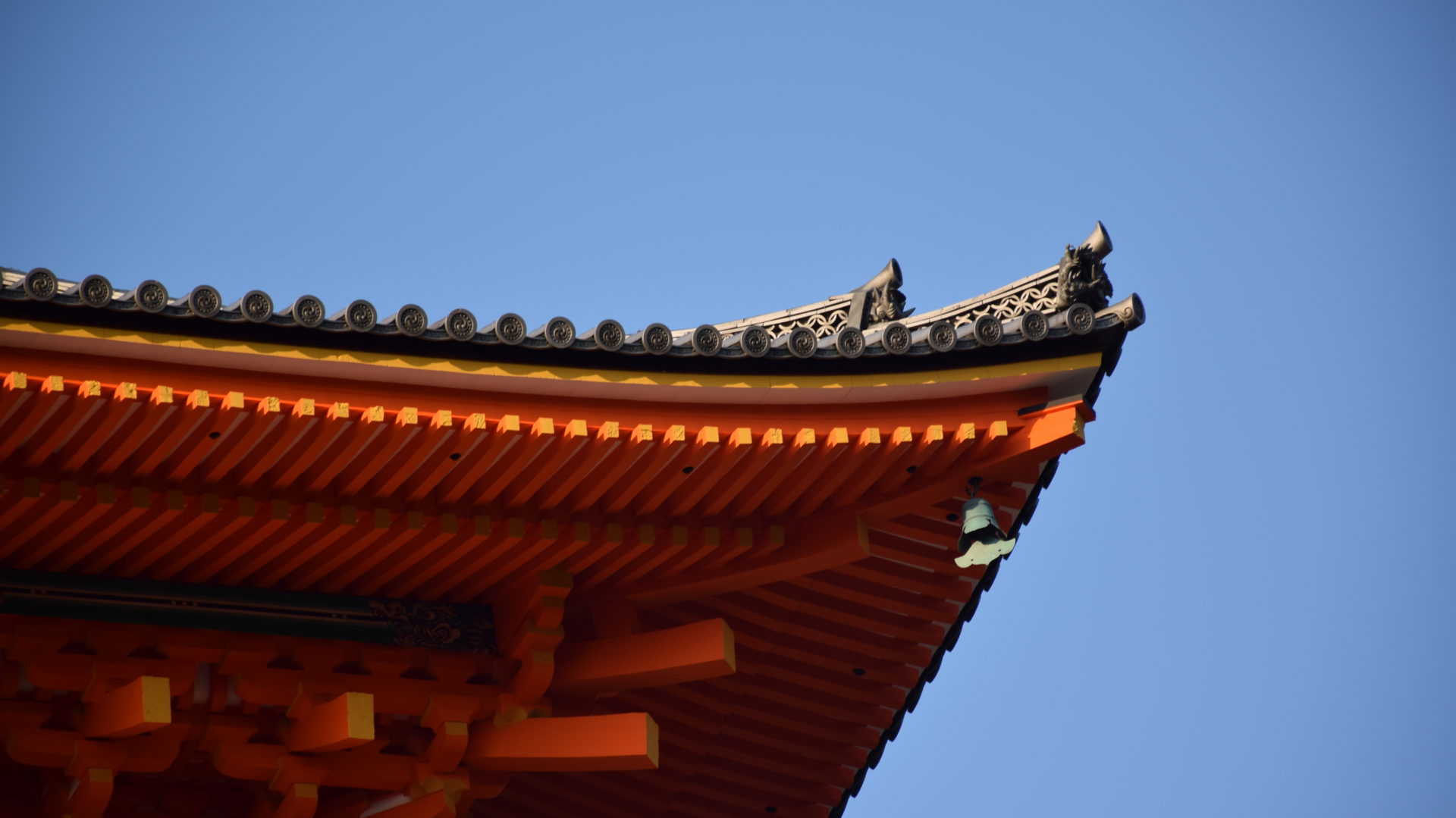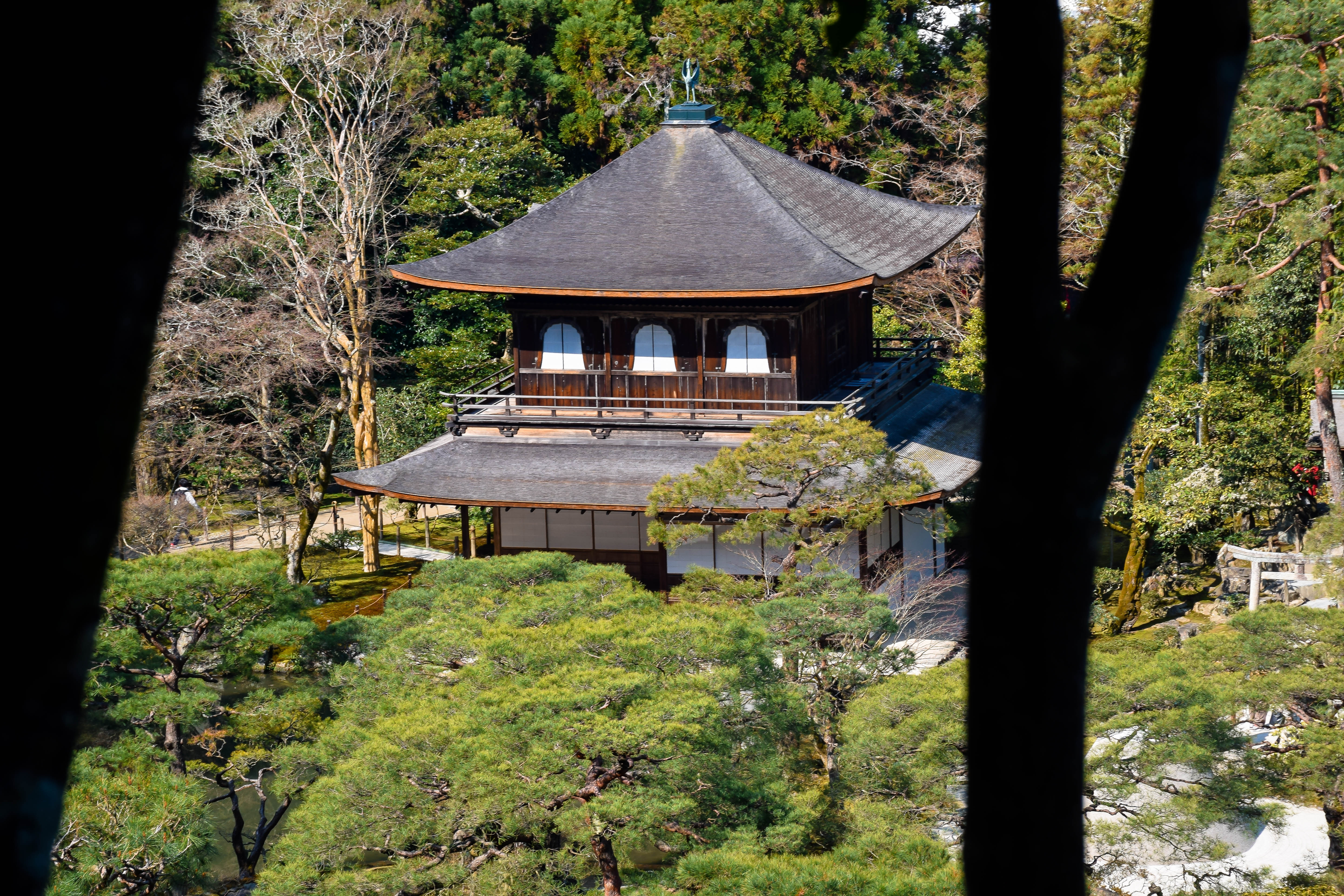There are many temples and shrines in Kyoto, so many so it’s hard to choose which to go to and easy to get “templed-out,” where you go to so many temples and shrines in a short period they all start to blur together. Even still, some massive temples can sneak up on you like Higashi Hongan-ji (below) on the way to somewhere else.

And then there is Ginkaku-ji, the Silver Pavilion, which I only knew it as the silver counterpart to the Golden Pavilion, or Kinkaku-ji, in the north. I had been to Kinkaku-ji many years earlier when I first visited Kyoto, though it was beautiful, I remember crowds of tourists and I really didn’t spend much time there at all. Part of me was expecting more of the same from the silver counterpart, but I was happily wrong.
Entering the Zen temple’s grounds leads to a serene garden with reflective ponds, vibrant green moss, a perfectly coiffed sand garden and then the “silver” temple itself.



Now you may be thinking, “it doesn’t really look silver to me,” and your eyes are not deceiving you and you don’t need to adjust your monitor or smartphone screen settings. It is not silver. As the story goes, it was supposed to be covered in silver leaf, just as Kinkaku-ji was covered in gold leaf, but was never finished. Though, even this seems unclear as there are differing accounts that note financial trouble leaving it unfinished and some that say that it was never intended to be covered in silver at all, but appeared that way in moonlight or simply named that way only in contrast to Kinkaku-ji. However, despite the unclear name, it’s humble appearance is still breathtaking seated in the middle of this beautifully kept garden.
The Sea of Silver Sand, does live up to its name and is equally as striking as you stop and wonder at the time and dedication required to craft this garden.



Following the paths around the sand garden and in between the pine trees, you will pass over a couple of small slabs of stone that act as foot bridges to get to the other side of still ponds that reveal alternate views of the beautiful garden. Just walking through the garden can ease your mood with each step and put your soul at peace by the time you leave.


Luckily, for those who don’t want to leave so soon, there is a path up a hill within the temple grounds that offers beautiful views of the temple and the city of Kyoto beyond.
At the time we went in the morning, the early sunlight peaking through the trees made the moss gardens glow as if it was designed to be that way each morning. And maybe it was intended to be that way. With such a dedication to aesthetic and natural beauty over the centuries the result must be Ginkaku-ji, where nothing feels out of place. Each refection or shadow cast feels like it has purpose and draws you in to be captivated by.



Feeling the magic of Ginkaku-ji in the morning light, was only capped by the Philosopher’s Walk which conveniently starts (or finishes depending on which way you are heading) right outside of the temple. It is a peaceful, contemplative walk along a canal lined by cherry blossoms.
Japan, when you stop being unbelievably beautiful, I will stop writing about you.


